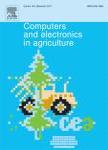版权所有:内蒙古大学图书馆 技术提供:维普资讯• 智图
内蒙古自治区呼和浩特市赛罕区大学西街235号 邮编: 010021

作者机构:Nanjing Agr Univ Coll Engn Nanjing 210031 Peoples R China
出 版 物:《COMPUTERS AND ELECTRONICS IN AGRICULTURE》 (Comput. Electron. Agric.)
年 卷 期:2025年第231卷
核心收录:
学科分类:09[农学] 0901[农学-作物学] 0812[工学-计算机科学与技术(可授工学、理学学位)]
基 金:National Key R & D Program of China [2023YFD2000304 2023YFD2000305-04]
主 题:Horticultural electric tractor Tillage operation Parameter matching Multi-objective optimization Improved grey wolf algorithm
摘 要:Rotary tillage is a critical process in agricultural production. However, discrepancies between the chassis movement and the operational parameters of tillage equipment often result in unstable tillage quality, reduced efficiency, and decreased endurance of electric tractors. To address these challenges, this study proposes a multiobjective optimization method that integrates the fuzzy analytic hierarchy process (FAHP) with an improved grey wolf optimizer (IGWO). A tillage quality monitoring system was developed by integrating and processing multi-sensor data to measure the soil fragmentation rate, tillage depth stability coefficient, and power consumption per unit area for various forward speeds, tillage depths, and roller speeds. Regression models were then established based on the collected data. FAHP was employed to determine the influence weights of these models on tillage quality and to construct a multi-objective optimization function. A traversal optimization algorithm based on adaptive dynamic weights and a reverse-learning grey wolf optimization strategy was proposed to identify the optimal working curves for forward and roller speeds under different target tillage depths. The results demonstrate that the proposed algorithm effectively optimizes multi-objective operational parameters, reducing the number of iterations by five and improving accuracy by 20.33% compared to previous methods. Field tests confirmed that the optimal soil fragmentation rate, tillage depth stability coefficient, and power consumption per unit area at different target tillage depths met operational standards for soil fragmentation and tillage depth stability. These findings provide a theoretical foundation and practical guidance for reducing operational tillage resistance and energy consumption in electric horticultural machinery.